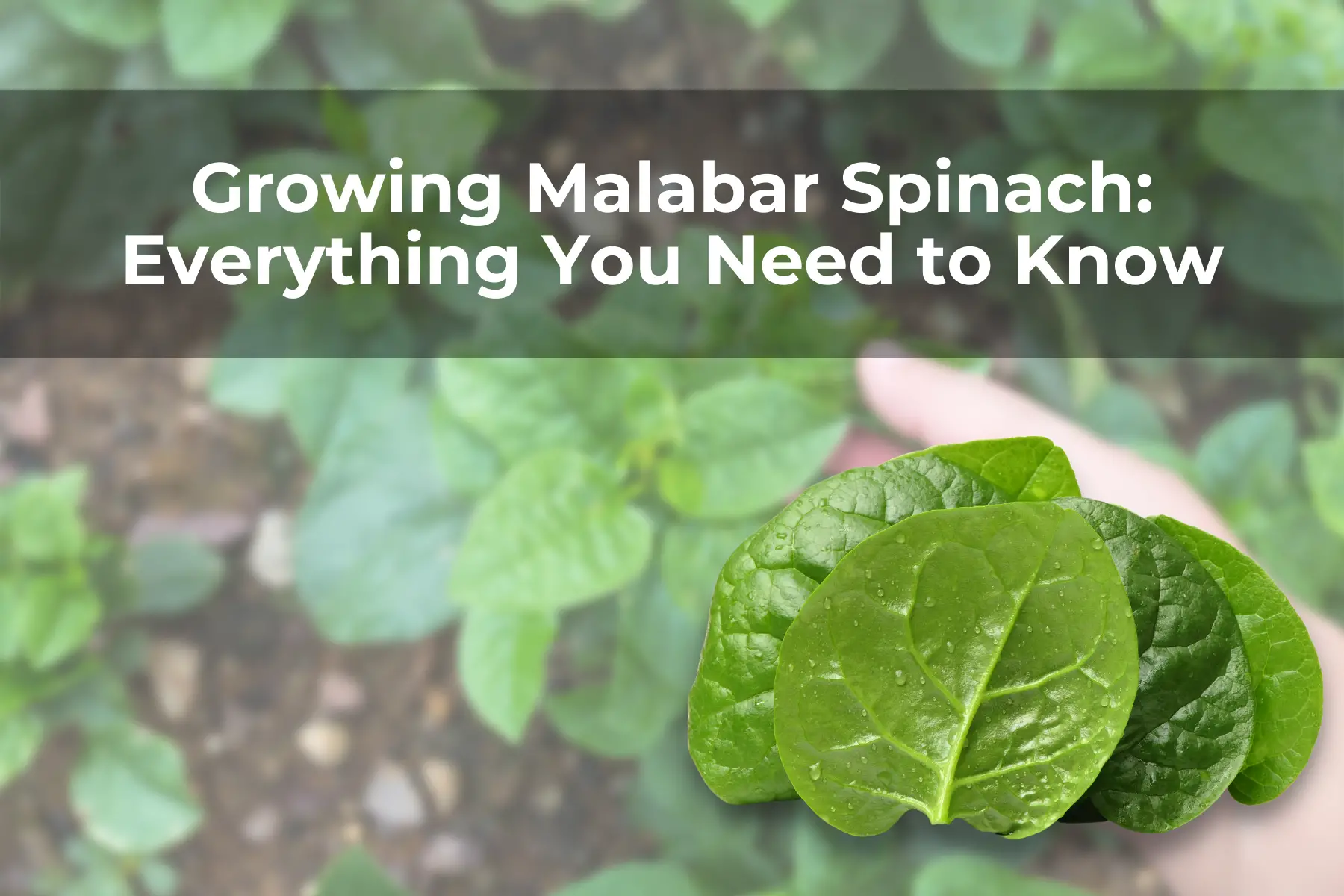Last Updated on April 11, 2024 by Real Men Sow
Growing Malabar spinach is ordinary in Brazil and other South American nations. It is a vine plant that is native to Africa and Southeast Asia.
Malabar spinach plants produce a thick, broad leaf that is similar in texture, taste, and colour to spinach. Malabar spinach is a tight-leafing plant, unlike spinach. It can grow enormous vines that reach more than 30 feet. You may harvest them to take advantage of summer temperatures.
Malabar spinach is a tropical plant that loves heat and humidity, unlike regular spinach. You may grow them as a perennial in warm climates. The Malabar spinach is an excellent choice for gardeners who live in hot and humid areas of the United States. Traditional spinach plants may not be able to thrive there.
How to Grow Malabar Spinach
This Malabar spinach care and growing guide will help you make a new choice. Although this vine is not the most difficult to grow, it can produce large harvests. We want to help you with these special steps.
Where Can You Buy Malabar Spinach Seeds
Malabar spinach is not something you’ll find in your local grocery store. It is also rare in speciality shops in many areas of the country. Most American gardeners will need high-quality seeds purchased from an online seller with a good track record. Avoid planting Malabar spinach in an organic garden, as most seeds will be treated.
Growing Malabar Spinach Seeds
Malabar spinach seeds can be started indoors up to six weeks before the last frost. Malabar spinach seeds are tough and can be scarified with a knife or file to aid in germination. Before planting, the seeds should be allowed to soak in filtered water for at least 24 hours. To make transplanting simple and quick, you can either use a seed tray or biodegradable seed pods. The temperature affects how quickly seeds germinate.
Planting Malabar Spinach
Malabar spinach is a tropical plant that cannot tolerate frost. Even cold temperatures can severely hinder growth. You should wait several weeks to transplant Malabar spinach seeds after frost has passed. These plants won’t be able to grow until the daytime temperatures start increasing.
Tips for Malabar Spinach Propagation
A great trick to propagate Malabar spinach is to cut off the tips of the vines and place them in a glass of water. Malabar spinach will quickly grow roots from the tips, so it is easy to reproduce Malabar spinach even if you run out of seeds.
Harvesting
Once the plant starts vining, you can harvest Malabar spinach. As the plant grows, you can pick individual leaves. The tips of the vine can also be eaten and are a great addition to garden salads. The thick leaves can be eaten raw or steamed, and then sauteed as traditional spinach. The shoots and leaves have a mild peppery flavor that is similar to spinach. They are mucilaginous and can become slimy when cooked, similar to okra.
Nutritional Value
The many health benefits that spinach offers is one of the main reasons why it is so popular. It’s also worth noting that Malabar spinach offers similar nutritional benefits.
They’re also rich in Vitamin A and Vitamin C, and has high iron and calcium levels. It is also rich in antioxidants, which can prevent you from getting cancer and improve your immune system.
Pests
Your Malabar spinach crop will be destroyed by several pests. There are many insects and caterpillars that will eat your fleshy green leaves. There are some things you can do in order to reduce the damage pests do to your plants. To control pests, you can spray 70% neem oil. To prevent pests infesting Malabar spinach plants, diatomaceous Earth is also a good option.
Common Diseases
Malabar spinach crops are not commonly affected by many diseases. Root rot, blight and other fungi can sometimes attack plants. It is important to get rid of infected plants as soon as possible to prevent further damage. A 70% neem oil treatment is an effective way to kill powdery mildew.

